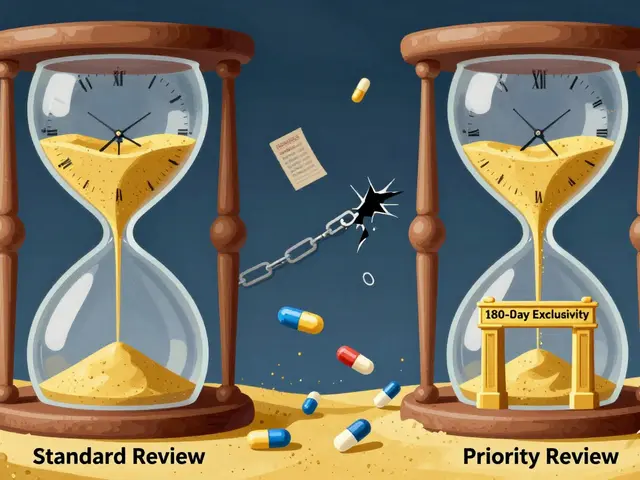Antiemetic Options – Your Guide to Managing Nausea
When working with antiemetic options, medications that stop or reduce nausea and vomiting. Also known as anti‑nausea drugs, they are essential for anyone dealing with acute or chronic upset stomach. Nausea, the uncomfortable feeling that often precedes vomiting can stem from chemotherapy, opioids, motion, or surgery, so the right antiemetic depends on the cause. For example, chemotherapy, cancer‑treating drugs that frequently trigger severe nausea usually calls for a combination of 5‑HT3 blockers and NK‑1 antagonists, while opioid‑induced nausea often responds to dopamine antagonists or antihistamines. Understanding these relationships helps you pick a drug that actually works, not just one that sounds familiar.
Key Factors When Picking an Antiemetic
Antiemetic options encompass several drug classes, each with its own mechanism and ideal use case. Serotonin (5‑HT3) blockers such as ondansetron bind to receptors in the gut and brain, making them the go‑to for chemotherapy‑related nausea. Dopamine antagonists like metoclopramide block dopamine receptors and are useful for postoperative or opioid‑related symptoms. Antihistamines (e.g., diphenhydramine) and anticholinergics (e.g., scopolamine) excel at motion‑induced or vestibular nausea, where inner‑ear signals confuse the brain. Finally, NK‑1 receptor antagonists (e.g., aprepitant) add a layer of protection for delayed chemotherapy vomiting. Selecting the right mix is a bit like building a toolbox: you need the right tool for the right job, and sometimes you combine them for stronger coverage. A practical rule is to match the drug class to the underlying trigger—this reduces side‑effects and boosts success rates.
Beyond the medication class, dosage form matters. Oral tablets are convenient for mild, predictable nausea, while injectable forms work faster for severe or sudden bouts. Duration of action also varies; some agents last 4‑6 hours, others up to 24 hours, influencing how often you need to dose. Cost and insurance coverage can sway decisions too—generic ondansetron, for instance, is often cheaper than newer NK‑1 blockers but may require a combination to achieve the same effect. Keep an eye on potential interactions: many antiemetics affect heart rhythm (QT prolongation) or interact with other chemo drugs, so a quick chat with your pharmacist can prevent surprises. By weighing the trigger, drug class, form, and safety profile, you can craft a regimen that feels personalized rather than one‑size‑fits‑all.
Below you’ll find a curated collection of articles that break down specific antiemetic choices, compare side‑effects, and offer buying tips for generics. Whether you’re dealing with chemo‑induced nausea, opioid side‑effects, or motion sickness, the posts ahead give you concrete data, safety pointers, and cost‑saving advice to help you make an informed decision.
Zofran vs. Other Anti‑Nausea Drugs: Which Is Best?
A detailed comparison of Zofran (ondansetron) with other anti‑nausea drugs, covering efficacy, side effects, cost, and guidelines to help you choose the right option.






